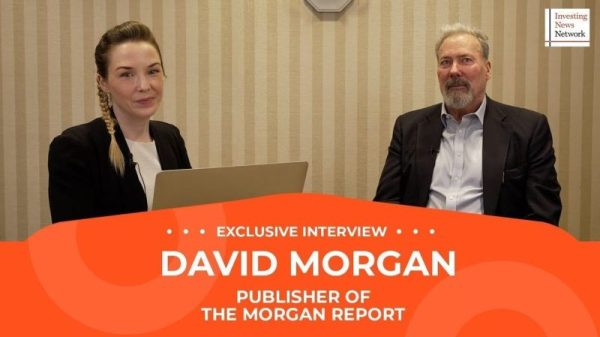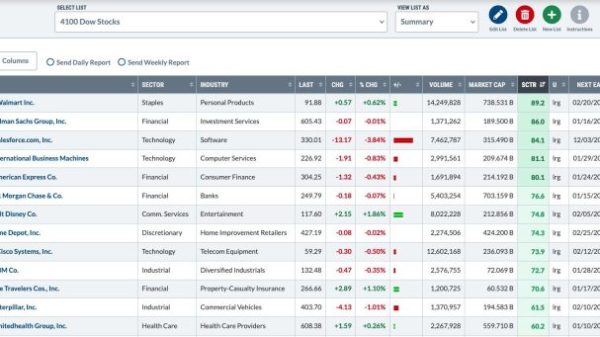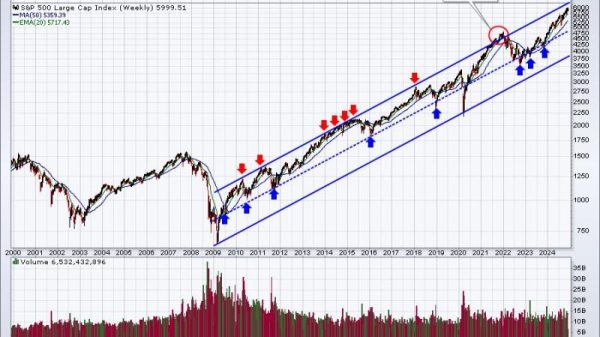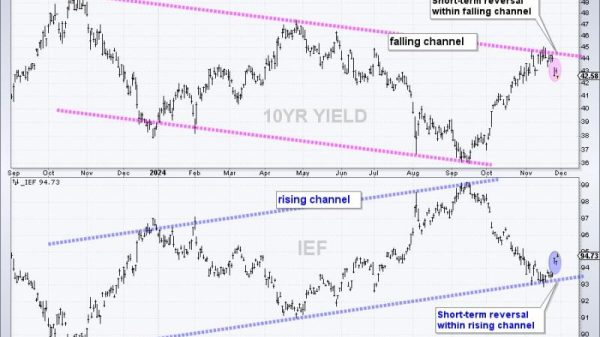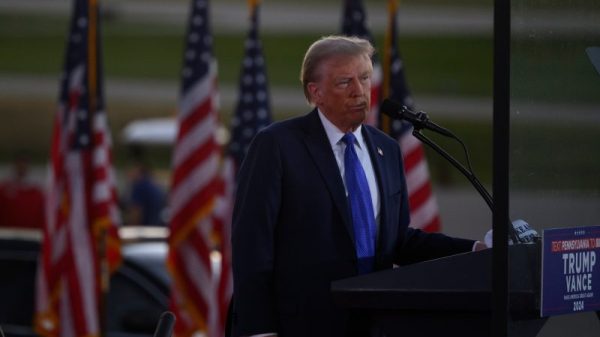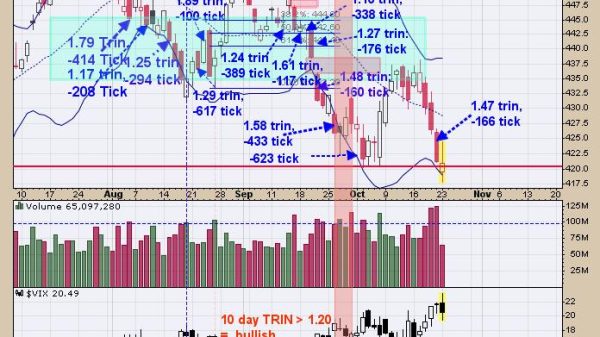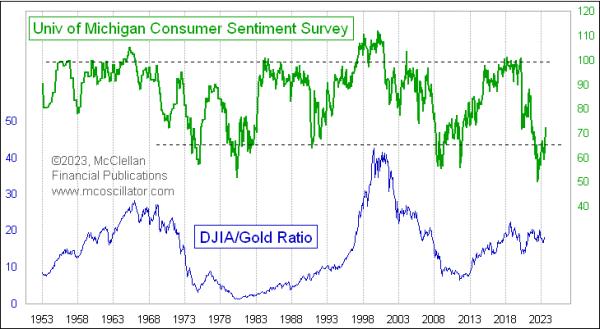The Biden campaign has drawn up options for expanding its unconventional $25 million early advertising effort this year, as the president continues to express frustration in private conversations about the state of his polling in battleground states, according to people familiar with the discussions.
Biden signed off on the initial fall television and digital campaign despite concerns from some advisers who feel the money could be better allocated for other priorities like building out staff sooner or building cash reserves. Other Democrats continue to question whether the upbeat sales pitch in some Biden ads fails to reflect the economic realities of voters.
Biden’s top advisers, by contrast, remain united on the strategy and are pleased by the early responses to the ads among key targeted groups, despite little immediate movement in the polls. They dismiss the criticism as typical Democratic bed-wetting, which they argue was proved wrong in 2022 when Democrats led by Biden outperformed expectations in the midterm elections. Decisions on any additions to the advertising budget are expected to come in the coming weeks.
Biden’s early embrace of advertising, though a departure from past reelection campaigns, resulted from what his team describes as healthy early fundraising, a more efficient plan for field organizing and the particular demands of the media environment, which has made it harder for Biden to reach voters with information about his accomplishments. The ads have been used by the campaign to test the sales pitches that work best with targeted groups of voters, such as Blacks and Latinos, and will be joined by a new organizing effort that will start next month in Arizona and Wisconsin.
“Instead of listening to the same naysayers who’ve counted out President Biden time and time again, we are doing the work to mobilize our coalition and lay the groundwork to scale our operation next spring to win in November 2024,” campaign manager Julie Chavez Rodriguez said in a statement. “President Biden’s campaign is well-funded, and building off years of DNC investments with innovative organizing tactics and targeted advertisements guided by the data to reach voters in a media environment that is more fragmented than ever.”
At the heart of the Democratic conflict over Biden’s strategy is a debate over how much the traditional blueprint for presidential campaigns needs to change and the best way for Biden to sell his accomplishments in office without alienating voters who remain dissatisfied with the economy, unaware of his accomplishments and wary of his running for reelection.
Interviews with nearly a dozen Democratic strategists, most of whom spoke on the condition of anonymity to describe private deliberations, revealed an array of views about the best path forward, with most people saying the current strategy is an acceptable, if somewhat untested, departure from the norm.
“What they are trying to do is heal their wounds,” said one Democratic presidential strategist. “You are not going to solve this with people in a headquarters. It is partly art and partly science.”
Others have expressed concerns over the “Bidenomics” message, which ties the sales pitch to a political brand that polls poorly on the economy, and the reliance of ads on macroeconomic indicators, like job growth and a declining inflation rate, that do not directly address the economic realities of many voters. They have argued that Biden and his top advisers are wasting money at a time when voters are not paying attention and not even convinced that Biden will be the Democratic nominee.
“The Democratic community aren’t bed-wetters always for no reason,” said one Democratic consultant, reflecting a concern that has arisen in recent months. “To me, this is the West Wing just being completely in a bunker and tone deaf to what the American people are going through.”
Joel Benenson, the former pollster for Barack Obama and Hillary Clinton presidential campaigns, recently published an essay comparing Biden’s predicament to the 2012 race, when the Democrats faced a disconnect between the grim economic mood of the nation and a desire to sell Obama’s first term as a success. Benenson argued that Biden must be seen as “someone who understands that we can’t keep telling people that what they see and feel isn’t real” — a theme that is present in some of the Biden spots.
Benenson said in an interview that there were advantages and disadvantages of going on air so early in a campaign.
“It does give them an opportunity here to get what is a potentially potent message to a lot of working and middle-class people when no one else is on the airwaves. That would be the only rationale I could see for this,” he said. “I wouldn’t say I have 100 percent confidence that these will work, but I have a suspicion that this is an idea that is worth putting in the marketplace.”
Biden aides say that the current level of ad spending is not designed to make a significant dent in Biden’s polling problems. Surveys of Pennsylvania voters by Quinnipiac University found no change in Biden’s approval and favorability — both at about 40 percent — between June 28 and Oct. 4, for example. During that same period, Biden and Future Forward, an outside group that works with the Biden team and runs similar ads, spent $3.2 million in the state, mostly on television, according to AdImpact.
But the Biden campaign believes the ads lay the groundwork for polling movement next year. Biden, who is briefed weekly by his senior campaign team, currently has about the same national approval numbers as Donald Trump and Barack Obama at this point in their presidencies, according to Gallup.
In private conversations, Biden has complained to aides about his low poll numbers and acknowledged that he believes voters’ concerns about his age are a significant factor in his approval rating, according to people familiar with the conversations. One Biden adviser disputed that, saying that when the president discusses poll numbers, it’s about spreading the word about his accomplishments and not age.
The president’s advisers, pointing to recent special elections and the 2022 midterms, have also begun to argue that traditional measures like presidential approval and favorability will matter less in 2024 than past cycles. Trump, who is leading the race to become the Republican nominee, still polls under 40 percent in favorability. His brand of politics has been largely rejected by voters in three consecutive election cycles since he won the White House in 2016.
The current Biden ad budget is just a fraction of what he and allied groups expect to raise and spend next year, when both voters and donors are likely to more fully engage with the possibility of another Trump term in the White House. Between June 1 and Election Day in 2020, the Biden campaign spent about $608 million on television, radio and digital advertising, according to the ad tracking firm AdImpact. Many Democrats expect the total funds by their side in the presidential race will approach $2 billion, including outside groups, by the end of next year.
But $25 million is a lot to spend in the first months of a campaign. Federal filings revealed this week that Biden’s reelection effort, including the national party, spent money at a higher rate than either the Trump or the Obama reelection efforts during the same period in their campaigns. The Biden effort also spent a lower share on non-advertising related expenses.
The total Biden reelection effort spent 81 percent of its total third-quarter fundraising during the three months that ended in September, according to internal party calculations. The effort spent 67 percent of fundraising on expenses excluding the ad campaign.
By comparison, the Trump effort, including the national Republican Party, spent 72 percent and the Obama effort spent 77 percent of its fundraising during the same period, when neither aired ads aimed at persuading voters.
Most of this year’s advertising costs were born directly by Biden’s campaign account, using so called “hard dollars” that must be raised in amounts of $3,300 or less per donor during this election cycle. Other funds came from “coordinated” advertising funds with the national party, which are limited in any single cycle. Campaigns typically try to hold back on advertising in the early months of a campaign in part because federal rules allow campaigns to get lower advertising rates than other outside groups in the final weeks before the election.
Biden’s campaign account spent $8.6 million from July to September on advertising and media production, about a third of all the money the campaign raised, according to the campaign’s quarterly filing with the Federal Election Commission. The ad spending accounted for 68 percent campaign’s expenses during that period, or 17 percent of the expenses of both the campaign and the DNC, according to federal filings and internal calculations.
Part of that shift results from a decision by Biden’s team to hire its field organizers in key states at a slower pace than the Obama campaign, a strategy that has been endorsed by former Obama campaign manager Jim Messina, who says that campaign erred in 2011 by hiring too fast.
“Democrats have misgivings about everything,” Messina said about the criticisms that both the Biden and Obama teams faced. “The entire time the whole party was second-guessing me.”
Biden’s 2024 field strategy is also embracing new techniques, not available to Obama, including programs to encourage large numbers volunteers to directly contact family and friends. About two dozen new staff will begin pilot-testing that approach next month, with programs targeting Black, Latino, female and young voters in Arizona and Wisconsin.
Biden’s team plans to measure how the field effort overlaps with the ongoing advertising campaign, building on a variety of tests that campaign is already running about the recall and effectiveness of different types of ads, which vary from sweeping cinematic spots to testimonials from working people to traditional 30-second highlights of Biden’s legislative accomplishments. The ads that are aired, both by the campaign and Future Forward, must prove their effectiveness in audience testing beforehand.
“We want to emerge from this with an ideal mix of how we want to talk to each of our targeted voters,” said a Biden adviser involved in the project. “People are more persuadable than I would have expected.”
The campaign is also testing shifts in how media is consumed since the 2020 race. One early discovery, according to another person involved, is that about half of the ads aired on YouTube are viewed on television screens, a shift from past cycles. The viewership of major live sporting events has also increased since past cycles, leading the campaign to advertise during college and professional football games.
“This is a $25 million down payment on what will be a really significant, billion-dollar communications program, and there is data that we already feel really good about,” said another Biden adviser involved in the effort. “We are going to have a Library of Alexandria that we are going to take and bring to bear in a 2024 campaign.”




